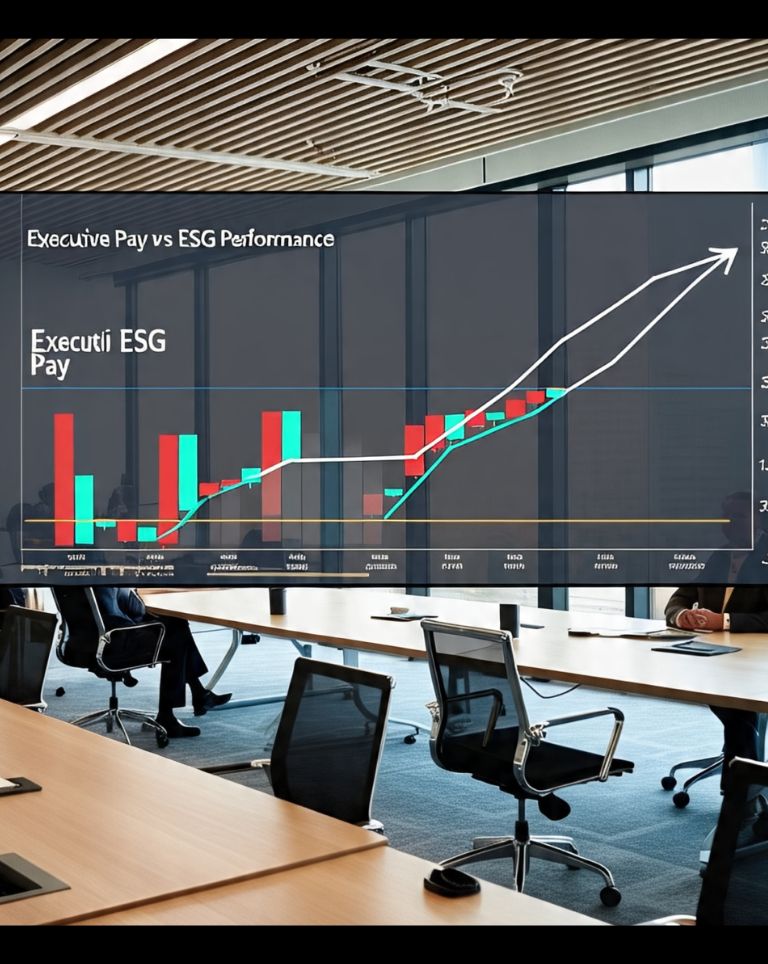As ESG priorities rise on the corporate agenda, companies are rethinking how they evaluate leadership performance. One of the most tangible changes is the integration of ESG metrics into executive compensation packages. This move is more than symbolic—it represents a shift in how companies define success and drive long-term value creation.
This article explores rationale, key metrics, implementation strategies, risks, and real-world examples of ESG-linked executive pay.
Why Link ESG Performance to Executive Pay?
1. Aligning Interests with Stakeholders
Incentivizing ESG outcomes aligns executive decisions with the interests of investors, employees, customers, regulators, and society. This is especially relevant in sectors where sustainability is directly linked to business continuity.
2. Driving Long-Term Value
Traditional compensation structures based on short-term financial targets can conflict with long-term ESG objectives. Including ESG metrics helps balance profit with purpose, supporting more resilient and responsible business models.
3. Responding to Investor Expectations
Institutional investors such as BlackRock and Norges Bank increasingly expect ESG factors to influence executive pay. Proxy advisory firms like ISS and Glass Lewis are also integrating ESG considerations into their voting guidelines.
Popular ESG Metrics in Executive Compensation
Companies typically use a combination of qualitative and quantitative ESG indicators. These vary by industry, maturity level, and stakeholder priorities.
Environmental Metrics
- Carbon reduction targets
- Renewable energy transition milestones
- Energy efficiency improvements
- Water and waste management goals
Example: Shell includes emissions intensity targets in their Long-Term Incentive Plan (LTIP) for senior executives.
Social Metrics
- Diversity, Equity & Inclusion (DEI) targets
- Employee engagement scores
- Health and safety indicators
- Community impact or human rights compliance
Example: Starbucks ties executive bonuses to workforce diversity improvements and retention rates.
Governance Metrics
- Ethical conduct and anti-corruption performance
- Board diversity or independence metrics
- Compliance and risk management effectiveness
- Cybersecurity maturity
Example: Deutsche Telekom includes compliance violations as a negative modifier in pay calculations.
Approaches to Integration
1. Weighting ESG in Bonus Calculations
Companies may allocate 10–30 percent of annual bonuses to ESG-related goals. These are often used in short-term incentive plans (STIPs).
2. ESG in Long-Term Incentive Plans (LTIPs)
More mature programs tie executive equity awards or stock options to multi-year ESG goals. For example, carbon neutrality by 2040.
3. Modifiers or Multipliers
Some firms apply ESG results as modifiers (plus or minus 10–20 percent) to the overall performance payout, allowing flexibility while ensuring accountability.
4. Balanced Scorecards
Combining financial and non-financial indicators offers a comprehensive performance evaluation of the senior executives.
Challenges and Criticisms
Despite the momentum, linking ESG to pay is not without criticism:
1. Lack of Standardization
With no universal ESG metrics, comparing or verifying performance across firms is difficult. This opens the door to greenwashing.
2. Subjectivity in Targets
Qualitative goals (such as “improve culture”) may be hard to measure or may lack clear thresholds, reducing accountability.
3. Short-Termism
Companies may favor easily achievable ESG targets for optics rather than meaningful, long-term goals.
4. Misalignment with Materiality
Not all ESG issues are material to every company. Tying pay to irrelevant ESG metrics can distort priorities.
Best Practices for Effective Implementation
To ensure credibility and impact, companies should consider the following:
Materiality Mapping
Align ESG metrics with issues most relevant to the business model and stakeholder priorities. This ensures focus on what truly matters. For example, labor rights are key for a textile company, while data security may matter more for a tech firm.
Clear and Measurable Targets
Set ESG goals using SMART criteria — Specific, Measurable, Achievable, Relevant, and Time-bound. Avoid vague aspirations. For example, say “cut Scope 1 emissions by 30% by 2026” instead of “reduce emissions,” so performance can be tracked.
Third-Party Assurance
Use independent verification for ESG data such as GHG audits, safety records, or DEI metrics. This improves trust, minimizes the risk of manipulation, and strengthens the credibility of ESG-linked performance assessments — especially when tied to executives.
Transparent Disclosure
Disclose how ESG metrics are linked to compensation. Clarify which targets are used, how performance is measured, and what results were achieved. This should be included in proxy statements or annual reports to ensure clarity, consistency, and stakeholder confidence.
Board Oversight
Ensure remuneration committees have ESG literacy through training or expert input. Informed oversight helps set meaningful targets, and fairly assess progress. This prevents superficial compliance and supports a genuine link between ESG performance and incentives.
In closing
Incorporating ESG metrics into executive compensation is a powerful way to hardwire sustainability into the corporate DNA. Done well, it reinforces long-term thinking, transparency, and stakeholder trust. Done poorly, it becomes a box-ticking exercise vulnerable to greenwashing and skepticism.
As regulatory frameworks evolve and investor expectations sharpen, the spotlight on ESG-linked pay will only intensify from hereon.
Amlan Shome is a commercial sustainability advisor with Maersk enabling the energy transition of the maritime and aviation sector.













